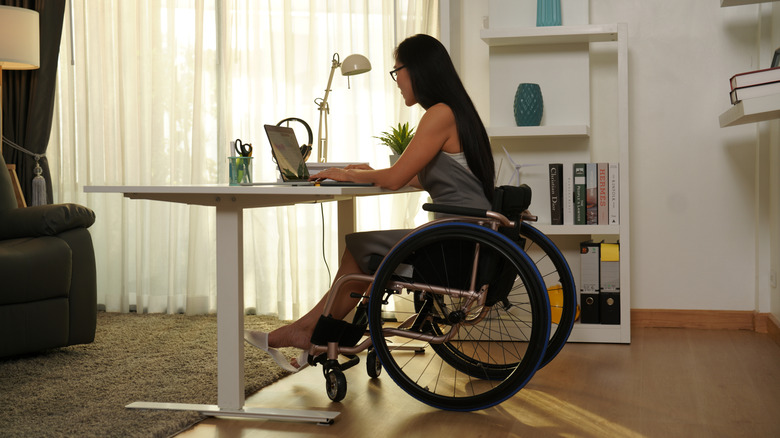The Best Floors For Wheelchair Accessible Homes, According To Mike Holmes' Podcast
When using a wheelchair, the accessibility of your home is very important. You want to be able to comfortably move around your house with ease, without worrying about slipping or potentially damaging your flooring. On his Holmes on Homes Podcast, Mike Holmes addressed this issue in an interview with accessibility expert Ronny Wiskin, discussing ways to increase the accessibility of your home for wheelchair users. While there are plenty of easy ways to increase the accessibility of your home for people with disabilities, one of the renovations Wiskin recommended was changing the floors to 12-millimeter laminate flooring. At 12-millimeter thickness, the flooring is sturdy enough to withstand the force of wheelchairs, even a power chair, and provides a scratch-resistant surface.
The Americans with Disabilities Act (ADA) says that you should look for four categories in your flooring: firmness, stability, slip resistance, and smoothness. Laminate floors that are 12-millimeter thickness and above check off all of these categories and provide a safe, durable surface that will be as functional in your home as it is stylish.
Why laminate floors make your home more accessible
Laminate floors are very affordable and provide a realistic wood-grain look and texture, while still giving you the stability and resistance needed for a wheelchair. Ronny Wiskin explains in the Holmes on Homes Podcast that one of the most important things to look for in your laminate flooring is the thickness. The thicker the material is, the less it will move, creating a firm, stable surface for your wheelchair or power chair to glide over. Wheelchairs generally produce more force on surfaces because of their weight and durability, so it's important that the laminate flooring you choose is both thick and locked in enough to withstand this force, especially when you're turning your wheelchair, which asserts more pressure and friction. Twelve millimeters or above should accommodate this just fine.
In addition to withstanding the force of turning wheelchairs, laminate floors also provide a slip-resistant surface that is still smooth enough to safely use your wheelchair on. Rough surfaces, changes in level, or cracks in surfaces often make wheelchair use difficult, so it's important to keep your flooring as level as possible and use proper cleaning products that are safe for laminate floors so it isn't slippery. Laminate floors can also lift if not installed properly, or if there's too much moisture in the air. To prevent your flooring from lifting, make sure to keep the humidity in your house low and install the flooring correctly.

